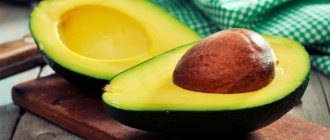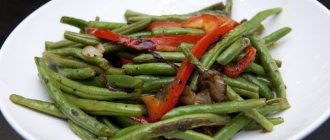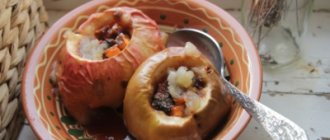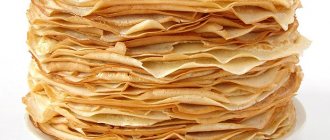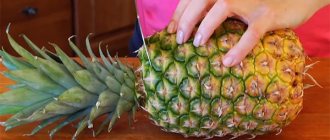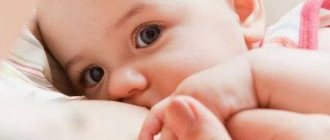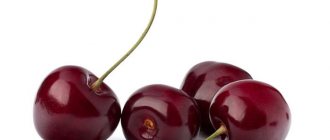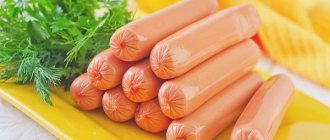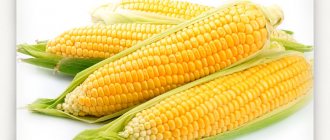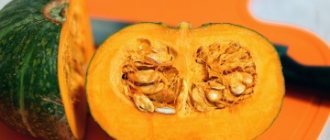During breastfeeding, doctors recommend avoiding eating seafood, because such food contains strong allergens and toxic substances. Pollock, salmon and light tuna are considered relatively safe seafood. And the most allergenic are mussels and lobsters, oysters and crayfish.
Improper nutrition of a nursing mother can cause a number of negative consequences in the body of an infant, including poisoning and stool disorders, stomach upsets and severe colic, and food allergies. For more information about what you can and cannot eat during lactation, read the link https://vskormi.ru/mama/razreshennie-produkti-pri-grudnom-vskarmlivanii/.
The benefits of seafood
Seafood usually includes everything edible that is obtained from the waters of the world's oceans, excluding mammals and vertebrates. Our usual list of seafood includes lobsters and crabs, squid, shrimp, octopus, and various shellfish. All seafood has one thing in common - it is an easily digestible protein, a low-calorie dietary product that contains a lot of iodine and phosphorus, which are necessary for the health of adults and for the proper development of children.
A common property of seafood is a high risk of allergies in a child, so even the safest seafood needs to be introduced into the mother’s menu gradually, monitoring the baby’s well-being. Let's take a closer look at the properties of the most popular seafood, since they differ in their effect on the human body.
Rules for introducing into the diet of a nursing mother
The diet of a nursing mother should be rich and varied. Therefore, eating fish is not only possible, but also necessary. Another question is that not all its types and varieties are equally useful and acceptable in a given period.
Not recommended for use:
- Fish that may contain mercury: king mackerel, tilefish, shark, swordfish, tuna;
- raw fish (sushi), dried, salted, smoked, canned fish and sticks;
- fish from dangerous regions, such as the Baltic Sea, the Lower Volga region, the Sea of Japan, and any polluted water bodies.
The product can be introduced into the diet when the baby reaches 1–3 months. First try the fish balls, a piece of boiled fish. Wait 2-3 days and watch your baby's reaction. If everything is fine, you can eat fish and dishes made from it twice a week. We recommend boiled fish, stewed with vegetables and baked in foil. You can combine it with cheese - bake it in a cheese coat.
Fish baked in foil is beneficial for a young mother
To start, take catfish, pollock, hake, river pike, perch, and sole. To reduce allergenicity, boil the fillet in salted water twice. Drain the first broth, then add water and boil the fish again.
It is recommended that breastfeeding women cook fish soups using a second broth as well. This way you will remove harmful substances and allergens as much as possible, while protein and vitamins will remain.
You can try introducing seafood exclusively in boiled form from 3 to 6 months according to the recommended regimen:
- you need to start with a small piece of the product;
- You need to observe the baby’s reaction for several days;
- if there is no negative reaction, you can eat fish from time to time, approximately once every week and a half;
- If you have any food allergies, you should wait up to 1.5–2 years with seafood.
You should know! When choosing frozen fish (herring, mackerel, hake, flounder), pay attention to its color. The presence of yellowness indicates that fish oil has already lost its beneficial properties and has turned into slag. Fresh fish should have pink, not gray, gills. Seafood with a strong fishy smell is stale and is not recommended to buy.
The most and least allergenic species - table
| Type of fish | Degree of allergic reaction | ||
| Strong | Average | Weak | |
| Tuna | + | ||
| Salmon | + | ||
| Chum salmon | + | ||
| Herring | + | ||
| Mackerel | + | ||
| Cod | + | ||
| Hake | + | ||
| Acne | + | ||
| Pollock | + | ||
| Som | + | ||
| Trout | + | ||
| Pike | + | ||
Shrimps
Shrimp are members of the crustacean family. Their meat is rich in micro- and macroelements, amino acids, which:
- help boost immunity;
- improve the condition of hair, skin and nails;
- promote joint restoration;
- normalize the functioning of the thyroid gland;
- strengthen the heart muscle.
Regular consumption of shrimp meat will help a woman during lactation to regain strength after pregnancy and enrich breast milk with substances important for the proper development of the baby.
Despite all the beneficial properties of the product, the question of whether a nursing mother can include shrimp in her diet remains open. Today there are three types of shrimp on sale:
- Northern deep-sea. The safest option, since in fishing areas the ocean is less polluted by waste.
- Southern warm-water fish, fishing is carried out in coastal waters. This product is cheaper, but the risk of containing heavy metals in meat is significantly higher.
- Freshwater. They are bred in pools on special farms. To speed up the growth of shrimp and to protect them from diseases, hormones and antibiotics are added to their feed. Such a product not only contains fewer nutrients, but can also cause serious harm to the health of mother and baby.
To avoid food poisoning, make sure the product is fresh before enjoying shrimp. It is not recommended to buy sushi and rolls with these crustaceans, since the ingredients included in the dish and hot seasonings can mask the staleness of the shrimp. If it is possible to purchase a high-quality product, and the baby does not have an allergic reaction to it, it is recommended to add up to 100 grams of heat-treated shrimp to the menu 1-2 times a week.
Beneficial features
All edible plants not only have good taste, but also bring great benefits to the body. Nettle is no exception, which has the following beneficial qualities:
- It perfectly stops heavy bleeding, which is especially important for women in the postpartum period.
- Strengthens all blood vessels of the body.
- Improves metabolism and regulates carbohydrate balance.
- Eliminates digestive problems due to the high content of coarse fibers in the composition.
- Helps cleanse the body of waste and toxins, saturates it with useful microelements and nutrients.
- Increases the volume and quality of milk produced by the female body.
- Has a beneficial effect on the condition of the skin and improves its appearance.
- Strengthens hair and stops hair loss.
- Nettle has excellent anti-inflammatory properties and helps the body recover faster.
Important! The leaves of this plant contain a large amount of iron. Therefore, its use is strongly recommended by doctors for anemia.
Bivalves
Among the edible bivalves, the most popular are oysters, mussels and scallops. They contain a wide range of vitamins and minerals, useful microelements, including iron, selenium and calcium.
Regular consumption of shellfish will help:
- improve the functioning of the cardiovascular system;
- stimulate the functioning of the gastrointestinal tract;
- prevent the appearance and development of liver cirrhosis;
- increase hematopoietic activity;
- remove toxins from the body;
- lower the level of dangerous cholesterol in the blood;
- reduce the risk of developing cancer.
In most regions of the country, shellfish are sold frozen, shelled and peeled, as well as canned in oil and marinated. To avoid severe poisoning of mother and baby, preference should be given to a frozen product - after defrosting, you can check the freshness of the shellfish. In addition, preservatives and flavor enhancers are harmful to a child’s growing body.
Fresh mussels, scallops and oysters smell of the sea, the shellfish have an elastic structure and a clean, light color. An unpleasant odor indicates that the product has not been stored properly and is dangerous to eat. Shellfish are prepared as an independent dish or added to salads. Nursing mothers are advised to use only heat-treated mussels, oysters and scallops. This is safer and lowers the risk of allergies in the baby.
If you are trying any shellfish for the first time in your life, you should not do it during breastfeeding, since it is unknown how the body of the nursing mother herself will react. It is advisable to postpone introduction to exotic products until after lactation.
The benefits and harms of seafood during breastfeeding
The benefits of seafood have been known for a long time, because they all have high nutritional value due to high-quality proteins, and most of them are classified as low-calorie and even dietary products. For example, shrimp and crab meat contains 100 times more proteins and minerals (potassium, calcium, magnesium, phosphorus, fluorine, iodine) than beef, and lean dietary oyster meat contains all the amino acids necessary for the human body.
All these products are easily digestible and useful for dietary nutrition. However, not all of them are equally useful for nursing women, if only because many of them are on the list of allergens. Let's deal with each of them separately.
Shrimps
Shrimp are crustaceans from the order of decapods, there are about 100 species, and most of them are the object of industrial fishing.
Shrimp are:
- warm-water (mined in Latin America and Asia) - royal and tiger;
- cold-water (mined off the coast of Denmark, Norway, Canada, Greenland, and the Baltic countries)
Crayfish fishing is carried out using coastal and deep-sea methods. In coastal fishing, the quality of shrimp suffers, and therefore their cost is much lower.
For your information, shrimp are not only marine or oceanic, but also freshwater, but the latter are grown on specialized farms, often using various kinds of hormones and antibiotics to increase the “yield” and size of the crustaceans. This achieves an increase in the size of the crustaceans and a reduction in their “death” from diseases, but the taste and nutritional qualities become worse.
An adult shrimp ranges in size from 2 to 30 cm; 100 g of crustacean meat contains 18.9% protein, 2.2% fat, 0% carbohydrates and has an energy value of 95 kcal.
As we have already mentioned, shrimp meat contains many useful substances - amino acids, calcium, iodine, zinc, sulfur, copper, potassium, iron, phosphorus, fluorine, sodium, magnesium, chromium and selenium. All this is very useful for strengthening the immune system and functioning of the thyroid gland and heart, regulating the sweat and sebaceous glands, maintaining youthful skin and strengthening joints, nails and hair. By regularly eating shrimp, we can improve kidney function, hormone synthesis, and the formation of bone and muscle mass. In addition, crustaceans contain vitamins: A (responsible for vision and youth of the body), E and D (protect the circulatory system), C (increases immunity), B vitamins, as well as PP and H. Like sea fish, shrimp contain polyunsaturated Omega3 and Omega6 fatty acids, which help us develop properly and are good for our skin, hair and nails.
Although the crustacean contains cholesterol, it is harmless to our body, since it can only enter the bloodstream with fats. According to some scientists, people who regularly eat shrimp are less susceptible to cancer and various types of allergies (this is due to the fact that crustacean meat contains powerful antioxidants).
For a nursing mother, shrimp will be useful not only for restoring strength after pregnancy and childbirth, but also as a dietary nutritious product. However, it is better to eat it boiled rather than fried, and not earlier than the baby is 3 months old. This is due to the fact that even when boiled, shrimp can contain a certain amount of heavy metals and radioactive compounds (accumulated in polluted waters of seas and oceans), which is a strong allergen for the child’s body.
At the same time, you need to introduce shrimp into the diet literally one by one (and for the first time, 3 small pieces will be enough), then carefully observing the reaction of the baby’s body. If within 1-2 days the baby does not develop an allergic reaction, then in the future it will be possible to gradually increase the portion to 100 g, but not every day. 1-2 times a week will be enough. At the same time, when choosing a product in a store, pay attention to the “origin” of the shrimp - it is better to take non-freshwater one, caught in an ecologically clean region, and check whether they have been re-frozen (which will significantly reduce their beneficial properties).
Squid
Squids are cephalopods that live in all climatic zones. Many types of squid are edible and are the subject of industrial fishing. The carcass and tentacles are used for food; the main methods of preparation are boiling (no more than 5 minutes), stewing, frying, and drying. The main suppliers of squid to supermarkets are Asian countries - Japan, China, Vietnam.
100 g of squid contains: 7% proteins; 2.6% fat; 8% carbohydrates and has 175 kcal energy value. Squids are extremely useful for a nursing mother, because they contain trace elements and minerals (potassium, iron, iodine, selenium), polyunsaturated fatty acids and vitamins, but the benefits of shellfish subject to re-frozen are significantly reduced. In the diet of a nursing mother, squid can be present either as an independent dish (boiled or baked with a minimum amount of salt and spices), or in combination with other products (for example, in seafood risotto, in a salad, in the form of a squid roll or stuffed with vegetables ).
It is not advisable for a nursing woman to eat pickled or canned shellfish, as they may contain a large amount of preservatives and spices. It is also not recommended to eat salted squid (due to the high salt content) and fried ones.
Like any new product, squid is introduced into the mother’s diet gradually, starting with 1-2 pieces.
Mussels, oysters, scallops
Mussels are bivalve mollusks, widespread on the coasts of different latitudes and used as food products for preparing various dishes (soups, salads, fillings). 100 g of product contains: 9.4% proteins; 1.5% fat; 0% carbohydrates and has only 50 kcal energy value.
Oysters are a type of bivalve mollusk that is a popular commercial group of invertebrates. 100 g of oysters contains: 17.5% protein, 2% fat; 3% carbohydrates and 88 kcal energy value.
Sea scallops are considered a delicacy. The meat of these mollusks contains: 17% proteins; 2% fat; 3% carbohydrates and 92 kcal energy value per 100 g of product.
The body of the mollusk, hidden between the two shell valves, is edible.
Mussels (oysters, scallops) contain many useful substances - trace elements and minerals (calcium, iron, iodine, selenium), as well as vitamins (A, group B, C, E). They are useful for the functioning of the cardiovascular system, liver (prevents cirrhosis), strengthening the immune system, stimulating the gastrointestinal tract, improving the process of hematopoiesis, neutralizing carcinogens and removing toxins from the body, reducing cholesterol levels in the blood and the risk of cancer.
Breastfeeding women are not recommended to consume raw shellfish - this can lead to serious poisoning not only of the mother, but also of the baby, and also threatens infection with dangerous parasites. In addition, you should be very careful about the storage conditions of the product.
If you have not eaten shellfish before or during pregnancy, then this product should be introduced carefully, starting with 1 piece. However, given the fact of frequent poisoning with such exotic products, it is still better to hold off on delicacies of this type until the end of lactation.
Crabs, lobsters (lobsters, lobsters)
Crabs (short-tailed crayfish) - there are marine, freshwater and “land”, there are 6,780 species in total. Some of them can reach enormous sizes (up to 19 kg). Crabs make up 20% of marine crustaceans and are the subject of industrial fishing. 100 g of crab meat (not to be confused with crab sticks - they are made from some varieties of white fish) contains: 16% protein, 3.6% fat, 0% carbohydrates and 96 kcal of energy value.
Lobsters (lobsters) are marine crustaceans. Along with lobsters, the so-called “clawless crayfish” - lobsters - are also eaten. Meat under the shell, from the tail and from the claws is eaten. 100 g of this product contains: 17.5% proteins; 2% fat; 0% carbohydrates and 88 kcal energy value.
As a rule, crustaceans are consumed boiled, but a nursing woman should not get carried away with excessive spices when cooking. Crab or lobster meat can also be used to prepare salads, soups, and fillings. Breastfeeding women are not recommended to consume canned product due to the presence of preservatives and a large number of spices.
Octopuses
Octopuses are cephalopods. They can be found on store shelves, but their preparation requires some experience in order to be able to get rid of mucus, characteristic odor and ink residues. In addition, some species can be poisonous.
It is better for breastfeeding women to refrain from consuming such an exotic product until the lactation period ends.
Cephalopods
Cephalopods include squids and octopuses. They are highly valued as a source of protein, minerals and trace elements, vitamins and polyunsaturated fatty acids. To preserve the beneficial substances as much as possible, the product should not be re-frozen. Long-term heat treatment also harms it.
The carcass and tentacles of squids are used as food. Squids available for sale:
- frozen (unpeeled and peeled);
- canned and pickled;
- dried.
Canned, dried and pickled squid contain an excess amount of salt, which retains water in the body, which is harmful for a nursing woman. Spices and preservatives are dangerous for babies. It is recommended to prepare dishes from frozen product, making sure to ensure its freshness after defrosting. When feeding a baby with breast milk during the first months of life, the mother should avoid fried foods, so squid is boiled and added to salads, stewed or baked with vegetables.
Octopuses are an exotic product on our shelves. Usually small specimens go on sale as part of frozen seafood cocktails. Larger octopuses sold by the carcass must be carefully processed before cooking to remove mucus, ink residues, and specific odors. Compared to squid, octopus meat is tougher.
Food for a nursing woman
The diet of a nursing mother must include:
- Meat – rabbit, veal, turkey, skinless chicken. Meat dishes should be present in the diet every day in stewed, baked or boiled form.
- Dairy products - cheese, fermented baked milk, yogurt, cottage cheese, plain yogurt, kefir. It is advisable for a nursing mother to eat them daily or every other day. It is forbidden to add jam, honey or sugar to dairy products, as this can cause severe gas formation.
- Low-fat fish - pike perch, cod, pollock, flounder, hake.
- Vegetables - broccoli, pumpkin, cauliflower, turnips, cucumbers. Prepare dishes from stew mixtures without adding oil. Before eating, add a little unrefined vegetable oil to the prepared vegetables.
- Cereals - corn, buckwheat, rice, oatmeal.
- Sweets – biscuits, marmalade, marshmallows, marshmallows.
- Fats – butter, vegetable oil.
- Pasta without egg additives.
- Nuts - walnuts, almonds, hazelnuts in moderation two hours after the main meal.
- Fruits - bananas, peeled apples, persimmons, apricots, pomegranates, cherries. It is not recommended for a nursing mother to eat such fruits on an empty stomach, or two hours after the main meal.
- Drinks - herbal teas with thyme, oregano, mint, non-carbonated mineral water, fruit drinks, compotes, rosehip decoction.
Large crustaceans
This category includes sea crabs, lobsters, and lobsters. Lobsters and spiny lobsters (they differ in body shape) are also called lobsters (from the English lobster - lobster). Meat from the claws, tail, and under the shell is used for food. It has no carbohydrates, little fat and a lot of protein.
The product is consumed as an independent dish in boiled form (nursing mothers should limit the use of spices and salt), and added to salads. It is undesirable to include canned crab meat in the diet due to the high content of spices and salt, and the presence of preservatives.
Contraindications and side effects
In some situations it is necessary to refrain from including nettle in any form in your diet:
- For varicose veins and thrombophlebitis. The active substances of this plant strongly thicken the blood, which can lead to acute complications of these diseases.
- If you have a history of allergies to nettles.
- For kidney diseases.
- In the presence of any oncological diseases of the pelvic organs and bleeding in the postoperative period during their treatment.
Attention! Experts do not recommend consuming nettle for people who take any sedatives of herbal or synthetic origin. This plant has a fairly strong sedative effect and will only enhance the effect of the sedative.
In some cases, side effects may occur when consuming nettle. This is usually an allergic reaction in the form of a rash or itchy skin. Sometimes bloating and diarrhea may occur.
conclusions
Seafood during breastfeeding will benefit mother and baby if you carefully choose seafood. What seafood can be included in your daily diet? Exotic types of seafood, to which the mother’s body is not accustomed, should be excluded, as well as freshwater shrimp grown using hormones and antibiotics.
It is allowed to start introducing seafood into the menu only after the baby reaches three months of age. It is allowed to consume seafood 4-8 times a month, eating no more than 200 grams of product at a time. If mother and baby are not allergic to seafood, the answer to the question of whether seafood can be added to the diet of a nursing woman is yes.
Subscribe to our VKontakte group
Can I drink while breastfeeding?
It is recommended to use this plant during breastfeeding:
- with a lack of milk in a woman;
- with too much lochia and menstruation;
- with a lack of iron in the body;
- in the presence of any mild inflammatory diseases;
- with a lack of vitamins and minerals in the diet.
Nettle helps a woman’s body return to a pre-pregnancy state faster, improve overall well-being and quickly get rid of extra pounds.
